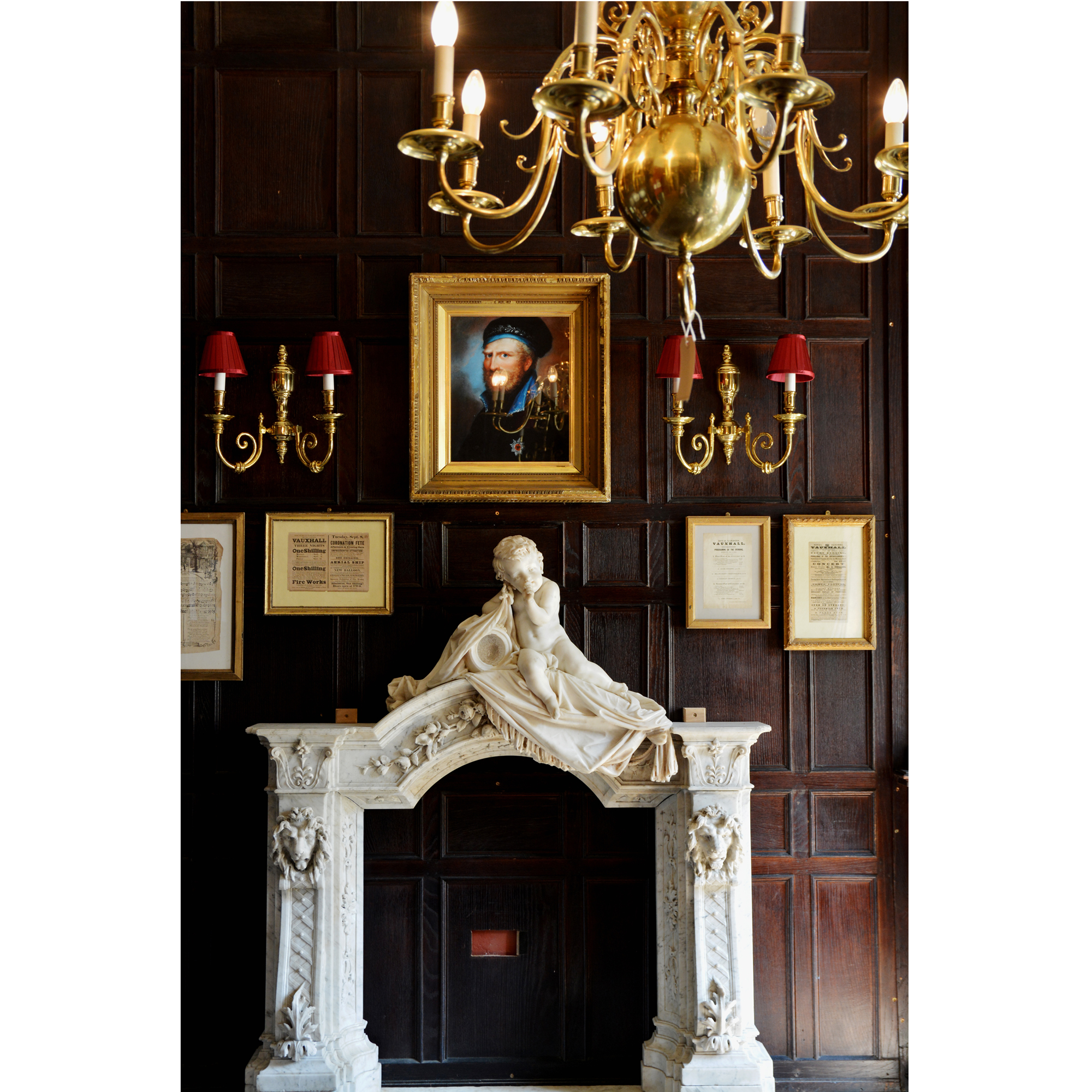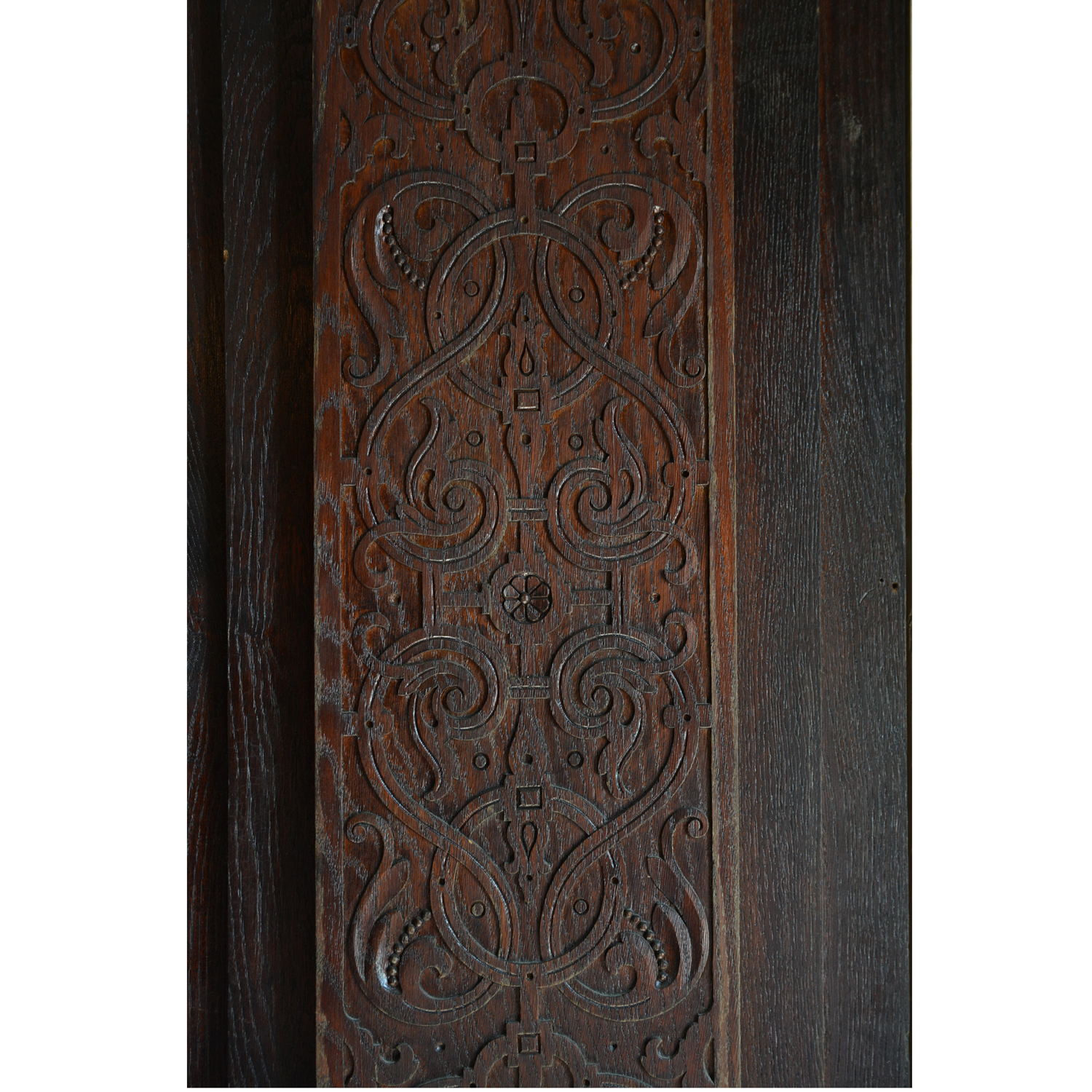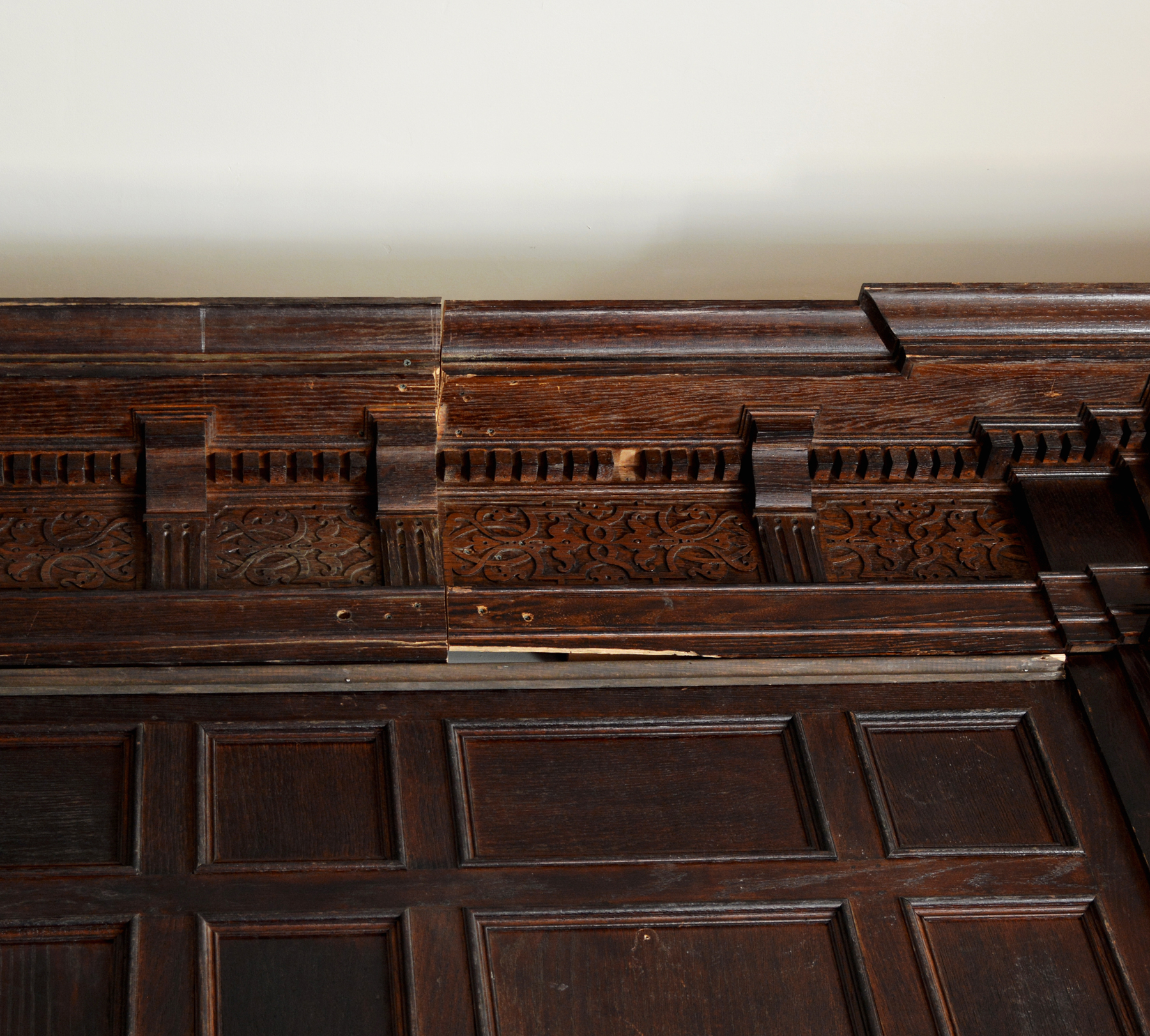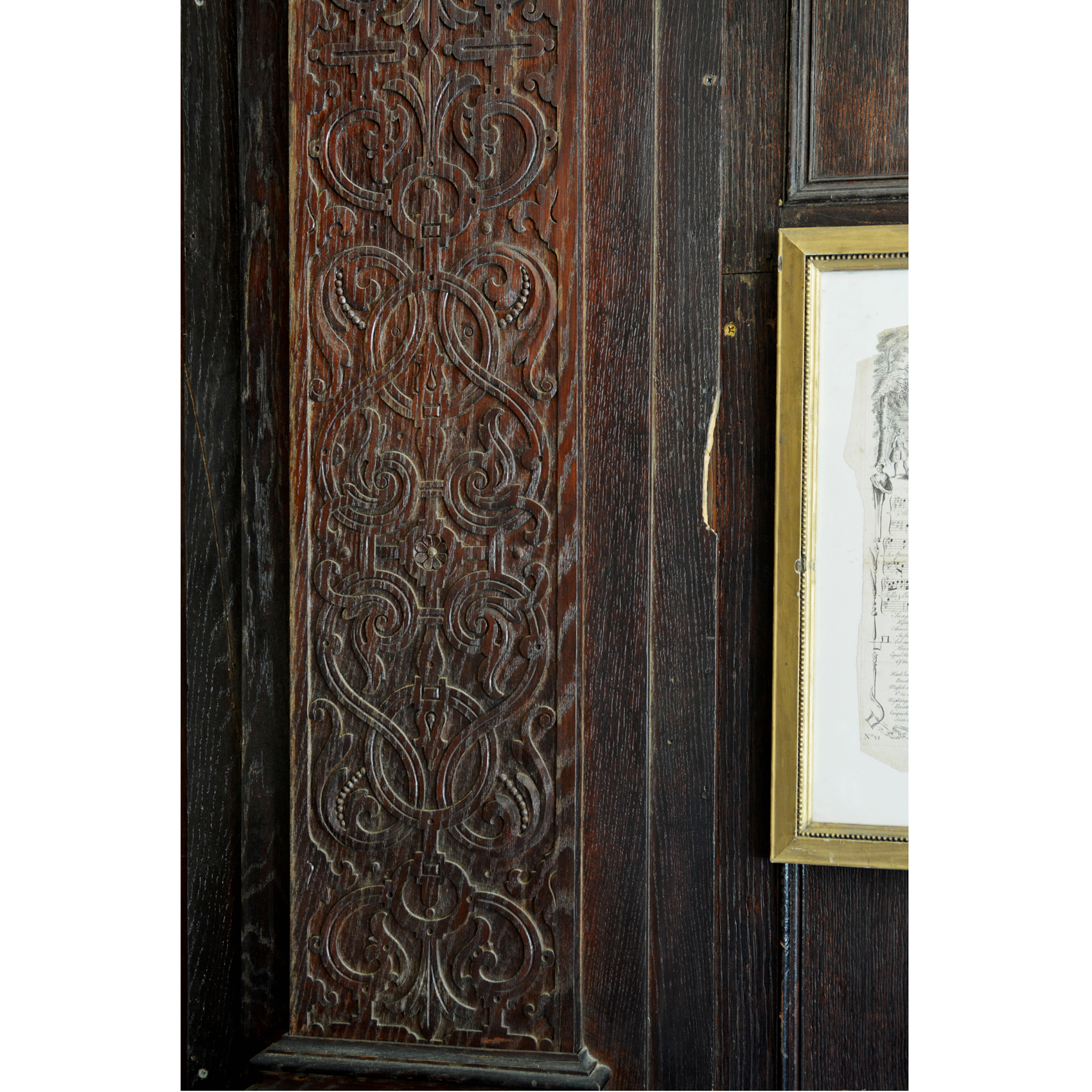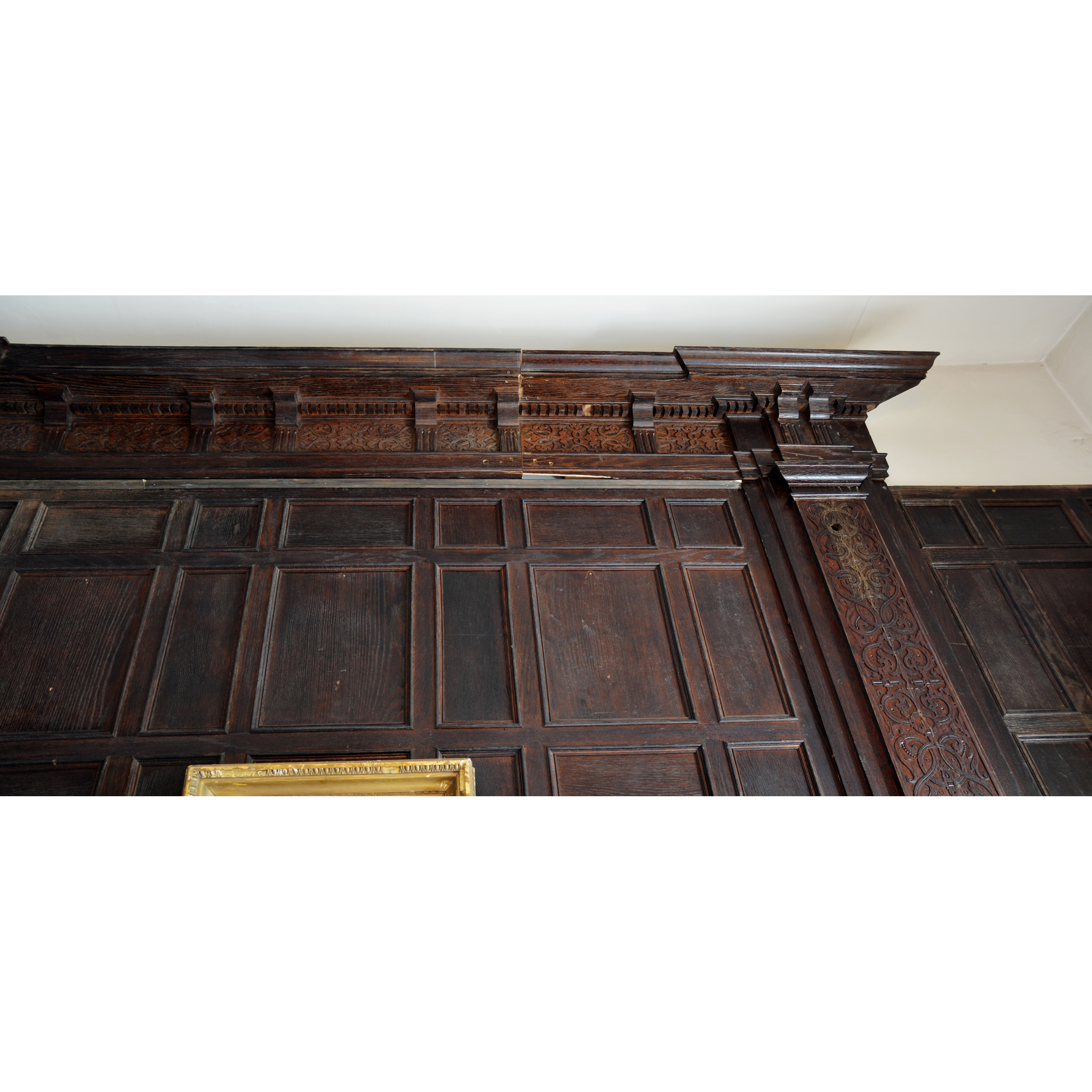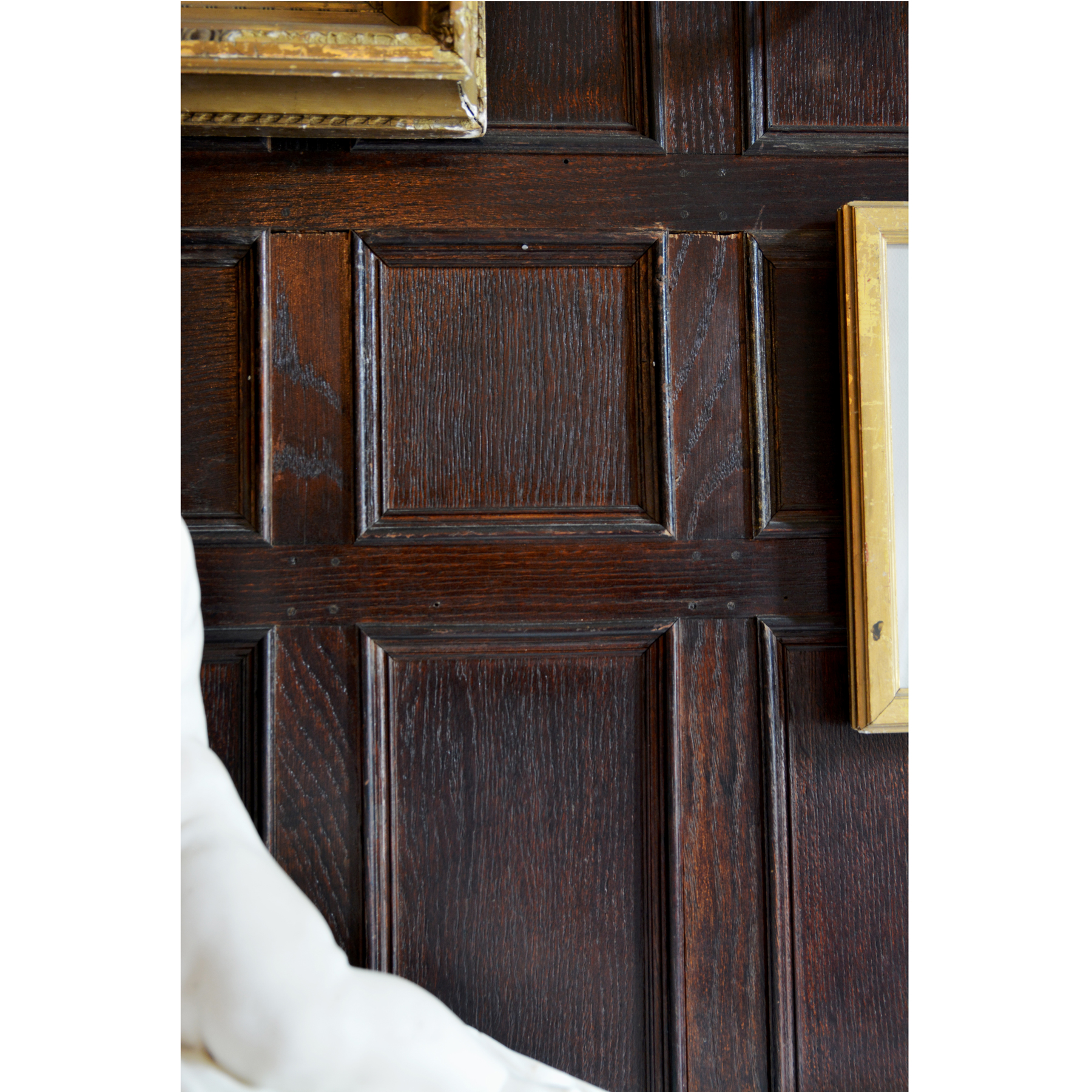No products in the basket.
Archived Stock - This item is no longer available
A large oak Jacobean style panelled room
a copy of the State Room (c.1606) at the ‘Old Palace’, Bromley-by-Bow, former hunting lodge of King James I,
currently re-erected in the British Galleries at the Victoria and Albert Museum.
The panelling of pegged construction, with eleven Doric pilasters having blind-fretwork of intertwining strap-ornament carved in low-relief, the elaborate cornice of conforming strap-work frieze surmounted by dentil and ogee mouldings, early twentieth century.
Twelve panels 231cm/91” wide, overall height of the panelling including cornice 371cm/46”, the pilasters 46cm/18” wide each. Various smaller panels available.
SOLD OUT
In stock
The demolition of the Old Palace in 1894 provoked particular consternation amongst the Society for the Protection of Ancient Buildings and played a significant role in future attempts to conserve London’s historic buildings. Founded by the Arts and Crafts powerhouse William Morris, SPAB as it is now known, was formed to stop the decay, demolition and destruction perpetuated by Victorian developers, architects and somewhat shockingly, Local Councils. Charles Ashbee, editor of the Survey of London wrote on the topic,
“It is useless to cry over spilt milk, but if the destruction of what, in a sense, was the finest building in East London did nothing else, it at least awakened the public conscience and was the immediate cause of the founding of the Committee for the Survey of the Memorials of Greater London…”
His polemic continues…
“The Board, in short, did not know what it was doing, it was in the hands of advisors who were equally ignorant; it committed a foolish action and has had to take the consequence. Like all public bodies that from time to time have acted similarly, it has been pilloried for its folly. Meantime, however, the Palace is lost to us.”
The original room has oft been described with much affection with the Survey of London stating ‘the walls were covered with beautifully moulded oak panelling, with carved pilasters at intervals, and at ceiling level a richly ornamented wood frieze with carved arabesque panels, modillion, and cornice.’ Unfortunately neither the decorative plasterwork ceiling or carved chimneypiece as seen at the V&A were included in LASSCO’s example, salvaged some 500 yards away from the museum on Queen’s Gate but detailed drawings are available to an enthusiastic craftsman if needed!

